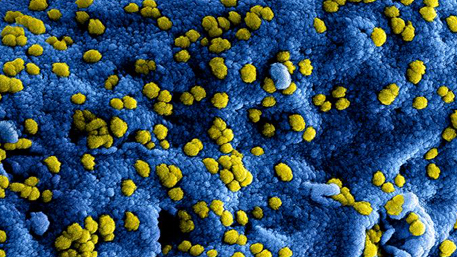
Doctors are using AI to triage covid-19 patients. The tools may be here to stay: Faced with staff shortages and overwhelming patient loads, a growing number of hospitals are turning to automated tools to help them manage the pandemic.
K Hao, Tech Review, April 23, 2020
K Hao, Tech Review, April 23, 2020
Hospitals are using AI to predict the decline of Covid-19 patients — before knowing it works
C Ross, StatNews, April 24, 2020
C Ross, StatNews, April 24, 2020
Dozens of hospitals are using an artificial intelligence system to predict which COVID-19 patients will become critically ill, even as many are struggling to validate the tool’s effectiveness on those with the new disease.
Can cell therapies halt cytokine storm in severe COVID-19 patients?
J Ankrum, Sci Trans Med, April 22, 2020
J Ankrum, Sci Trans Med, April 22, 2020
Renin-Angiotensin-Aldosterone System Inhibitors in Patients with Covid-19.
Vaduganathan Muthiah et al. The New England journal of medicine 2020 04 (17) 1653-1659
Vaduganathan Muthiah et al. The New England journal of medicine 2020 04 (17) 1653-1659
Nearly All Patients Hospitalized With Covid-19 Had Chronic Health Issues, Study Finds- Only 6 percent of patients at one New York area health system had no chronic conditions. Hypertension, obesity and diabetes were common.
RC Rabin, NY Times, April 23, 2020
RC Rabin, NY Times, April 23, 2020
Why Are Some Young, Healthy People Getting Severe COVID-19?
K Rogers, FiveThirtyEight, April 23, 2020
K Rogers, FiveThirtyEight, April 23, 2020
Some are looking into genetic differences. Our genes can affect the way our immune system responds to an infection, which could explain why some people fare worse than others. Another factor being investigated is the infectious dose, or the amount of virus a patient was exposed to when they first became ill.
Detection of Nucleocapsid Antibody to SARS-CoV-2 is More Sensitive than Antibody to Spike Protein in COVID-19 Patients
PD Burbelo et al, MEDRXIV, APril 24, 2020
PD Burbelo et al, MEDRXIV, APril 24, 2020
A cell phone data driven time use analysis of the COVID-19 epidemic
EP Fenichel et al, MEDRXIV, April 243 2020
EP Fenichel et al, MEDRXIV, April 243 2020
We simulate epidemics in almost every county in the United States. The model suggests that Americans' behavioral shifts have reduced cases in 55%-86% of counties and for 71%-91% of the population, depending on modeling assumptions. Resuming pre-epidemic behavior would lead to a rapid rise in cases in most counties.
Higher mortality in men from COVID19 infection-understanding the factors that drive the differences between the biological sexes.
SP Lyer et al, MEDRXIV, April 24, 2020
SP Lyer et al, MEDRXIV, April 24, 2020





















.png)










No hay comentarios:
Publicar un comentario